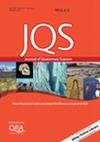The importance of terrestrial carbon sequestration during Termination 1
Abstract
During the transition from the Last Glacial Maximum (LGM) to the Holocene, terrestrial carbon sequestration occurred primarily in boreal forests and forest soils largely on landscapes that had been covered by ice sheets. Major processes operating during this period included radiative warming from rising concentrations of atmospheric CO2 (degassing oceans and oxidation of permafrost); increased seasonal warming associated with axial precession; melting of alpine glaciers and ice sheets; exposure of new land surfaces; and sequestration of carbon in expanding terrestrial vegetation and soils. We examine mechanisms of warming that melted glacial ice; temporal and spatial availability of newly exposed landscapes; rates at which plant colonization and soil development occurred; estimates of terrestrial carbon sequestration; and how those processes interacted with one another. Data from the West Antarctic Ice Sheet Divide ice core show that from 18 to 11 cal ka bp the concentration of atmospheric CO2 rose by ≈80 ppmv (≈170 Gt C); published estimates of net terrestrial carbon sequestration (following photosynthesis) are considerably higher (450–1250 Gt C). Thus, accumulation of carbon in terrestrial vegetation and soils played an important role in modulating atmospheric CO2 and, indirectly, Earth's climate during Termination 1, and possibly during earlier Quaternary ice ages.

 求助内容:
求助内容: 应助结果提醒方式:
应助结果提醒方式:


